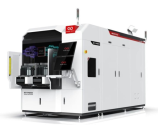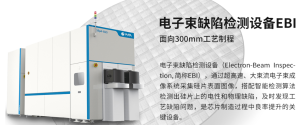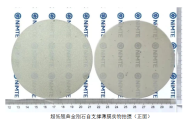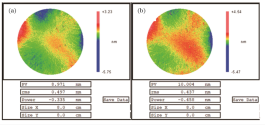Machining of ultra- precision optical components are the core components of lithography machines, with extremely high barriers and high value tracks
As the first research institute in the field of optics established in New China, Changguang Institute has undertaken the important task of making breakthroughs in lithography machines, and its technical strength is self-evident.
The processing of large-aperture optical lenses is the key to improving the resolution of optical lenses. The optical system has stringent requirements on the surface accuracy of the reflector. Changguang Institute has made breakthroughs in large-aperture magnetorheological polishing equipment and independently developed equipment to fully master the core processing technology. 1) In 2018, the 4.03-meter large-aperture silicon carbide reflector developed by Changguang Institute successfully passed the acceptance inspection. This is also the world's largest-aperture silicon carbide single reflector publicly reported; 2) It also has the research and development capabilities of a full set of manufacturing equipment required for the manufacture of reflectors. In addition, Changguang Institute's three core equipment, the 4-meter-scale reaction sintering furnace, the FSGJ-4 aspheric CNC optical processing center, and the 4-meter-scale large-scale magnetron sputtering coating machine, have all reached the domestic leading level.
Cooperated with Changguang Daqi to establish a joint venture company, and the ultra-precision processing capabilities were endorsed
Huachen Equipment and Changguang Optoelectronics have established a joint venture company, Changguang Huachen, in which the company holds a 72.7% stake. The company is responsible for the production of ultra-precision optical components , guide rails and other grinding machines, and provides related ultra-precision optical component processing. With the accelerated breakthrough of domestic substitution of lithography machines, the company has tied up with leading players, and its business is expected to develop rapidly

Looking at the details of the cooperation specifically, the processing process of the lithography machine lens is complicated. On the one hand, the company provides grinding equipment as a technical verification, and on the other hand, it provides the key front-end milling and grinding link of the lens embryo.
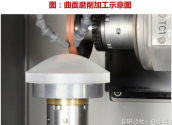
1) Front-end process: The mirror blank is first milled and formed by a high-precision machine tool to ensure the initial completion of the mirror shape and curvature. The processing accuracy needs to be controlled at the nanometer level;
2) Use a small grinding head to polish
magnetorheological polishing, ion beam polishing and other ultra-precision polishing methods to eliminate defects and coat the film. The company's front-end milling and grinding link directly determines the efficiency and time of the subsequent processes.

